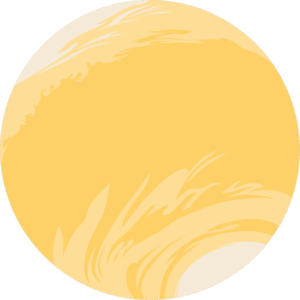The Downlink • May 12, 2023
Hard-working spacecraft and even harder-working microbes
Space Snapshot

Views of Earth from orbit are always a good reminder of how beautiful our planet is. This photo offers another reminder: of human ingenuity. Captured from the International Space Station on April 6, 2023, the image shows a Soyuz MS-23 spacecraft carrying astronauts safely through space high above the Caspian Sea as it relocated to another module on the station. It’s one of our picks for April’s best space images.
You love space, now take action
This weekly newsletter is your toolkit to learn more about space, share information with your friends and family, and take direct action to support exploration. Anyone can subscribe at planetary.org/connect to receive it as a weekly email.
Mission Briefings


A meteorite from the Eta Aquarid shower may have struck a New Jersey home. This annual shower, which peaked last week, is caused by the Earth passing through debris left behind by the comet Halley. Some of that debris includes rocks large enough to survive burning up in Earth’s atmosphere, and one such rock may have made it all the way into a bedroom in New Jersey. Nobody was injured, and the 10x15 cm (4x6 inch) rock (pictured) is being examined to determine its origin. Image credit: Hopewell Township Police Department.

NASA’s Dragonfly mission to Titan may be facing delays. The agency’s 2024 budget request included a nearly 20% cut to the mission’s budget. The mission team, based at the Applied Physics Lab, says this could affect the mission’s launch date, currently slated for 2027 with the flying spacecraft arriving at Titan in 2034.

Planetary defense experts met this week to plan for an upcoming close pass. The Apophis T-6 workshop brought world experts on asteroid research together virtually in an annual meeting to prepare for the close approach of the asteroid Apophis, which will happen in April 2029. While the asteroid does not pose a threat to Earth, it does present an opportunity to study an asteroid up-close without having to travel to a distant location in space and to engage the public about the importance of planetary defense.
From The Planetary Society


If you like breathing, you’ll love this microbe. Earth’s atmosphere wasn’t always as breathable as it is today; oxygen only became abundant in our air about 2.5 billion years ago, halfway through the planet’s current lifespan. This happened thanks to cyanobacteria, a microorganism that evolved to produce energy from sunlight, carbon dioxide, and water, emitting oxygen as a byproduct. Take a deep breath, and say “thank you” to your new favorite microbe. Pictured: Cyanobacteria under a microscope. Image credit: MIT.

Hear the human story behind NASA's VERITAS mission to Venus. Darby Dyar, Deputy Principal Investigator for the mission, joins this week’s Planetary Radio to talk about the mission that is currently on an indefinite hold, why it's worth saving, and what you can do to help.

Rocket launches are messy business, so why was the Starship launch and explosion such a big deal? Planetary Society Chief of Space Policy Casey Dreier spoke with environmental policy expert Eric Roesch about what made this particular test launch so environmentally harmful, and why the Federal Aviation Administration may ultimately be to blame. Listen to the full conversation on Planetary Radio: Space Policy Edition, or read the condensed transcript.

Job alert! The Planetary Society is hiring a Freelance Digital Advertising Specialist. If you are a Google and Meta ads expert that would delight in advancing space exploration, we encourage you to apply for this part-time position. The successful applicant will be able to work from our headquarters in Pasadena, CA, or remotely. See the job posting for more details and instructions for applying.
What's Up

Look for Venus shining bright low in the western sky after sunset. Higher up, Mars shines reddish. On May 15 it will be in line with the twin stars of Gemini, Pollux and Castor. In the predawn sky you can see Saturn in the east, with Jupiter shining very low to the eastern horizon. Find out what else to look for in this month’s night skies.
Wow of the Week

The same kind of microbes that produced the oxygen in our atmosphere are responsible for stunning views like this. NASA’s Aqua Earth-observing satellite captured this view of huge cyanobacteria blooms in the Baltic Sea on July 26, 2019. Image credit: NASA.
Send us your artwork!
We love to feature space artwork in the Downlink. If you create any kind of space-related art, we invite you to send it to us by replying to any Downlink email or writing to [email protected]. Please let us know in your email if you’re a Planetary Society member!


 Explore Worlds
Explore Worlds Find Life
Find Life Defend Earth
Defend Earth


